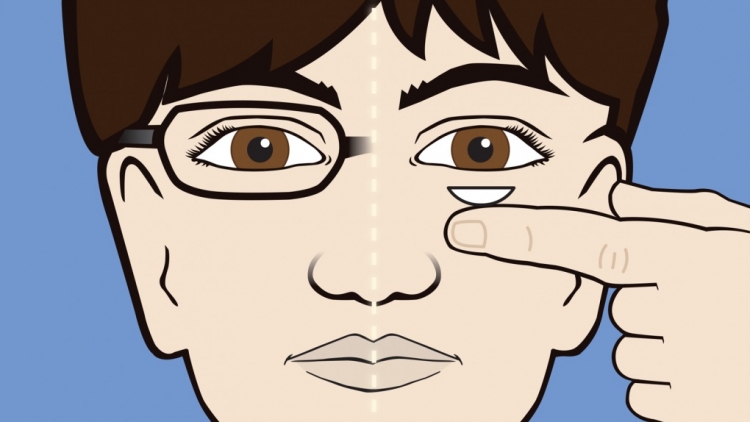What to know if your child wants contact lenses
U.S. Food and Drug Administration (FDA)
Improper use of contact lenses can cause serious injury. Is your child ready?
These days, eyeglasses can look pretty cool. Still, the day may come when your child asks you for contact lenses.
There are pros to consider — and cons.
The U.S. Food and Drug Administration regulates contact lenses and certain contact lens care products as medical devices. Contact lenses have benefits. They can be better for sports activities, because they don’t break as frames and the lenses of glasses can. In some cases, contact lenses improve the quality of vision in comparison to eyeglasses, especially for a child who is very nearsighted.
Contact lenses should be used safely, responsibly, and only under the supervision of your eye care professional. Otherwise, serious injury to the eye can result, particularly if the contact lenses are not removed at the first hint of a problem.
Contact Lens Risks and Safety Tips
Kids and contact lenses are not always the best fit.
If you are thinking about contacts for your child, you may want to look at how well your child handles other responsibilities, especially personal hygiene. Common behaviors that can result in injury include wearing another child’s lens; using saliva to moisten a lens; not following the directions of an eye care professional; and wearing cosmetic or decorative lenses purchased without a valid prescription from flea markets, beauty supply stores, the internet and other sources.
In fact, according to study published in Pediatrics, about 13,500 (or one-fourth) of the roughly more than 70,000 children who go to the emergency room each year for injuries and complications from medical devices are related to contact lenses. The problems from contact lenses include infections and eye abrasions — meaning that your eye can be bruised from contact lenses.
The most serious risk is that of ulcers (severe infections) of the cornea — which is the clear front part of the eye that shields it from germs, dust, and other harmful material. Ulcers are rare, but if not quickly treated and controlled, can result in permanent loss of vision. Not taking the necessary safety precautions can greatly increase the risk of ulcers. Eye care professionals generally do not recommend extended wear lenses (lenses that can be worn overnight or during sleep) for kids and teens because they can increase the incidence of corneal ulcers.
Daily disposable lenses can reduce some of the risks associated with wearing lenses since a new pair is used each day.
Another point to consider: children with seasonal allergies are usually not good candidates for wearing contacts. The lenses may only increase the itching and burning caused by their allergies.
Contact Lens Safety Tips
• Wash your hands before cleaning or inserting lenses. Carefully dry your hands with a clean, lint-free cloth.
• Rub, rinse, clean and disinfect your contact lenses as directed. Only use the products and solutions recommended by your eye care professional. Note that cleaning and rinsing (and the use of most care solutions) is eliminated if daily disposable lenses are prescribed.
• Never expose your contact lenses to any kind of water or saliva.
• Do not wear your lenses for longer than prescribed. Do not sleep in lenses unless they are prescribed to be used that way.
• Never wear someone else’s lenses.
• Always have a prescription for any lenses you wear.
• When playing sports, wear safety goggles or glasses over your lenses.
• Apply any cosmetics after inserting lenses. Remove your lenses before removing makeup.
• In general, have a pair of back-up glasses handy.
• Never put a contact lens into an eye that is red.
• If your eye is itching, burning, irritated or red, remove your lenses and contact your eye care professional.
What Else Should You Know?
Most contact lenses used by children are not used during sleep. And most lenses are used as a substitute for glasses, to provide only optical correction for blurry vision. However, there are some special types of contact lenses that may provide other benefits, or that may raise additional concerns. For example:
• The FDA approved the first contact lens to slow the progression of nearsightedness in children. Kids would begin wearing the lenses between the ages of 8 and 12 years old. (These lenses are “daily disposable” lenses that are worn only during waking hours and disposed of every evening.)
• Some lenses can be worn during sleep. These lenses, which can be either soft or rigid, have substantially greater risk of severe eye infection that can result in vision loss. There is a type of rigid lens (orthokeratology lens) that is worn during sleep that is intended to slightly remold the cornea to temporarily reduce nearsightedness. These lenses are typically worn every night during sleep but are removed in the morning and let the nearsighted patient temporarily see more clearly without glasses or contact lenses. There are some increased risks with this type of rigid contact lens wear.
• Decorative contact lenses can give the eye a different cosmetic appearance and can be made with or without vision correction. Lenses without corrective power are still medical devices, require a prescription from your doctor, and have the same risks as other lenses do. These risks may be increased if the contact lenses are purchased online.
• If your child is injured while wearing contact lenses, seek medical advice. • • • Consumers and health care professionals are encouraged to report adverse events or side effects related to the use of these products to the FDA’s MedWatch Safety Information and Adverse Event Reporting Program at www.fda.gov/safety/medwatch-fda-safety-information-and-adverse-event-reporting-program.
